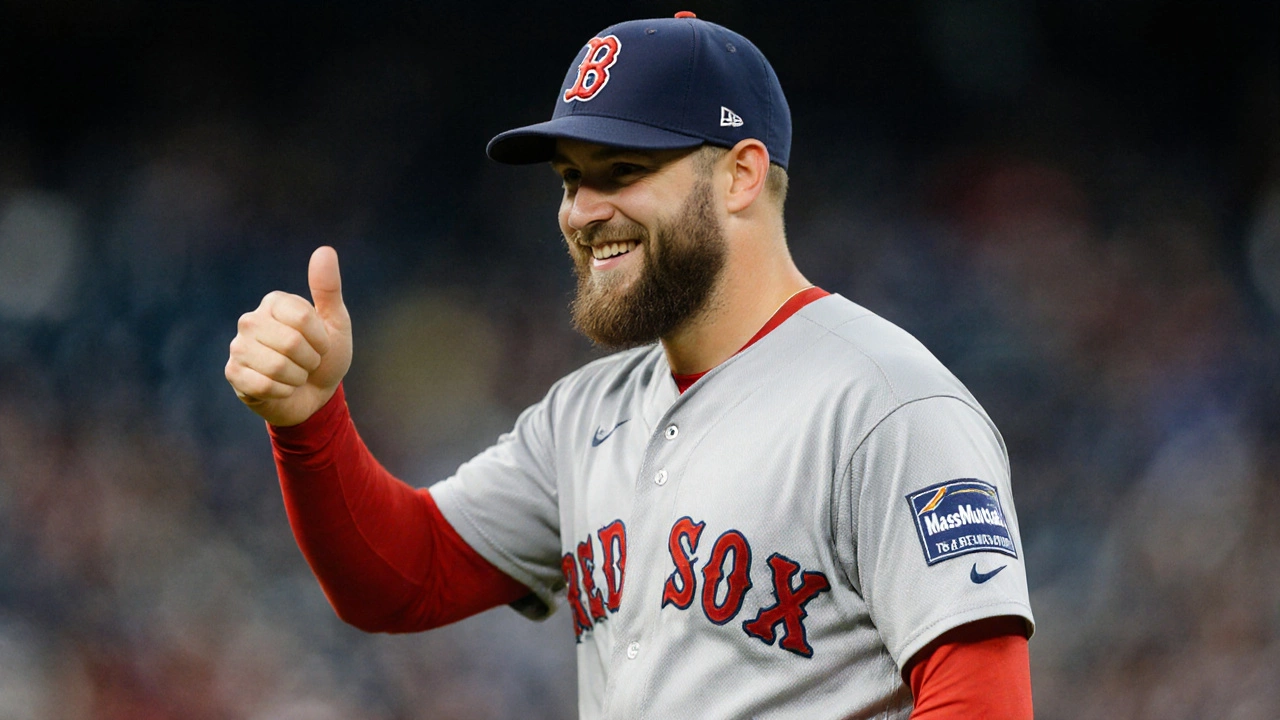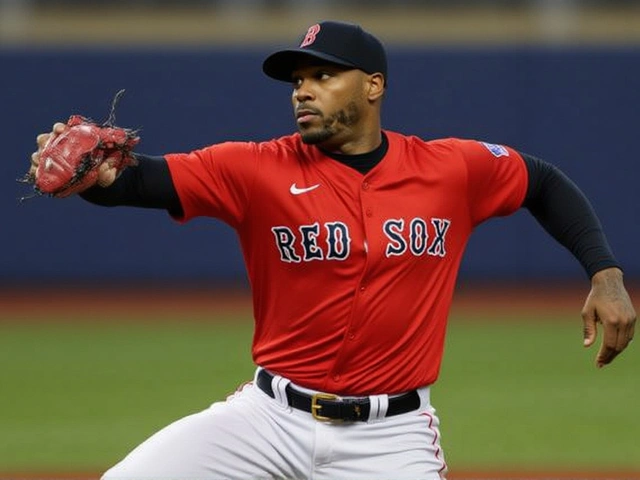When Aroldis Chapman, closer of the Boston Red Sox struck out the side in the ninth on September 30, 2025, the stadium erupted in disbelief. It happened during AL Wild Card Game 1Yankee Stadium, where the Red Sox clung to a 3‑1 lead against the New York Yankees.
Background to the Wild Card showdown
Both clubs entered the postseason with contrasting narratives. The Yankees, fresh off a bruising 101‑run regular season, were looking to prove their depth after a mid‑season coaching carousel. The Red Sox, meanwhile, had clinched the American League East on a late‑season surge, buoyed by a bullpen that posted a sub‑1.10 ERA across the last 30 games.
Boston’s starter, Garrett Crochet, starting pitcher for the Boston Red Sox, set the tone by delivering 11 strikeouts over 7 2⁄3 innings, allowing just two hits. His performance earned him a rare Game 1 win in a winner‑takes‑all scenario.
Chapman’s clutch ninth inning
Entering the eighth, Chapman inherited a 3‑1 lead after a clean ninth‑inning flyout by third baseman Jose Caballero. When the ninth began, the Yankees struck first: first baseman Paul Goldschmidt singled to center, followed by a second single from right fielder Aaron Judge. Left fielder Cody Bellinger capped the rally with a third straight hit, loading the bases with nobody out.
What happened next reads like a textbook lesson in high‑leverage pitching. Chapman first faced designated hitter Giancarlo Stanton. A 92 mph splitter whizzed inside, prompting a swinging strike that earned the first out. Second baseman Jazz Chisholm Jr. followed with a shallow fly to right field for the second out.
With the bases still loaded, Chapman turned to center fielder Trent Grisham. He unleashed a 101.2 mph four‑seam fastball that spun at 2,525 rpm; Grisham managed only a foul tip that landed straight in the catcher’s mitt, sealing the final strikeout and the game.
That sequence—three strikeouts on three consecutive batters—marked Chapman’s first postseason save and cemented his reputation as one of baseball’s most dominant closers.
Key performances and statistics
- Chapman’s postseason line: 1.1 innings, 3 hits, 0 runs, 3 K, 0 BB.
- Garrett Crochet: 11 K in 7 2⁄3 IP, 2 hits, 0 runs.
- Red Sox bullpen (regular season): 25‑of‑27 saves, 1.06 ERA, 0.69 WHIP over 51 IP.
- Yankees’ offensive stretch: Loaded bases with no outs in the ninth—an event that has occurred in only 3 % of postseason games since 2000.
Chapman entered the postseason riding a 13‑game scoreless streak, a run that began in late August and stretched through the regular‑season finale. His fastball remains a weapons‑grade 99‑plus mph, but the 101.2 mph burst on Grisham was his highest velocity of the year.
Reactions from the clubhouse and analysts
“That’s the kind of pressure we thrive under,” Alex Cora, manager of the Boston Red Sox said in the post‑game interview. “Aroldis showed why he’s the closer you pay for.”
Yankees manager Aaron Boone was more measured: “We had our chances. The ball just wasn’t there after the 9th‑inning scramble.”
Baseball analyst Ken Rosenthal noted, “Statistically, a bases‑loaded, no‑out situation is a 71 % win probability for the offense. Chapman flipped that odds on its head in under 30 seconds.”
What the win means for Boston
Beyond the obvious 1‑0 series lead, the victory injects confidence into a roster that has flirted with injury mishaps all year. The Red Sox now control the tempo of the series, forcing the Yankees to play catch‑up baseball—a scenario that historically favors teams with deeper bullpens.
With Chapman locking the door, Boston can lean on its rotation for five‑to‑six innings and let the late‑inning trio of Nick Pivetta, Andrew Heaney and Chapman handle the high‑leverage moments. If the Yankees tweak their lineup or add a pinch‑hitter, the Red Sox still have a margin of error thanks to a bullpen that posted a collective 1.02 ERA in September.
Looking ahead to Game 2
Game 2 is slated for Wednesday at Yankee Stadium. The Yankees will likely start veteran right‑hander Gerrit Cole, who posted a 2.18 ERA in the regular season. Boston’s ace for the night is expected to be left‑hander Chris Sale, who earned a 2.62 ERA despite a truncated campaign.
Analysts predict a tighter contest, noting that the Yankees will lean on their power trio—Judge, Stanton and Bellinger—to manufacture runs. The Red Sox, however, now have the psychological edge of having survived a near‑catastrophe.
Regardless of how the next nine innings unfold, Chapman’s 101‑mph strikeout will be replayed on highlight reels for months, a reminder that in October, a single pitch can rewrite a franchise’s destiny.

Frequently Asked Questions
How does Chapman’s performance affect the Red Sox’s bullpen strategy?
With Chapman proving he can close under the most pressure, Boston can afford to use its middle relievers for the seventh and eighth innings, preserving their ace closer for the final three outs. This depth gives the manager flexibility to match right‑handed hitters with left‑handed arms if needed.
What key factor turned the ninth‑inning rally into a Red Sox win?
Chapman’s ability to miss bats at extreme velocity disrupted the Yankees’ timing. His 92‑mph splitter and 101‑mph four‑seam fastball forced three consecutive strikeouts, converting a 71 % win probability for New York into a game‑ending three‑out inning for Boston.
Who are the Yankees likely to start in Game 2?
Most analysts expect veteran right‑hander Gerrit Cole to take the mound. He posted a 2.18 ERA during the regular season and has a history of thriving in high‑stakes games.
What does this win mean for the Red Sox’s chances to advance?
Taking a 1‑0 lead in a best‑of‑three wild‑card series puts Boston in a commanding position. Historically, teams that win Game 1 at home win the series 68 % of the time, especially when they have a dominant closer like Chapman.

Write a comment